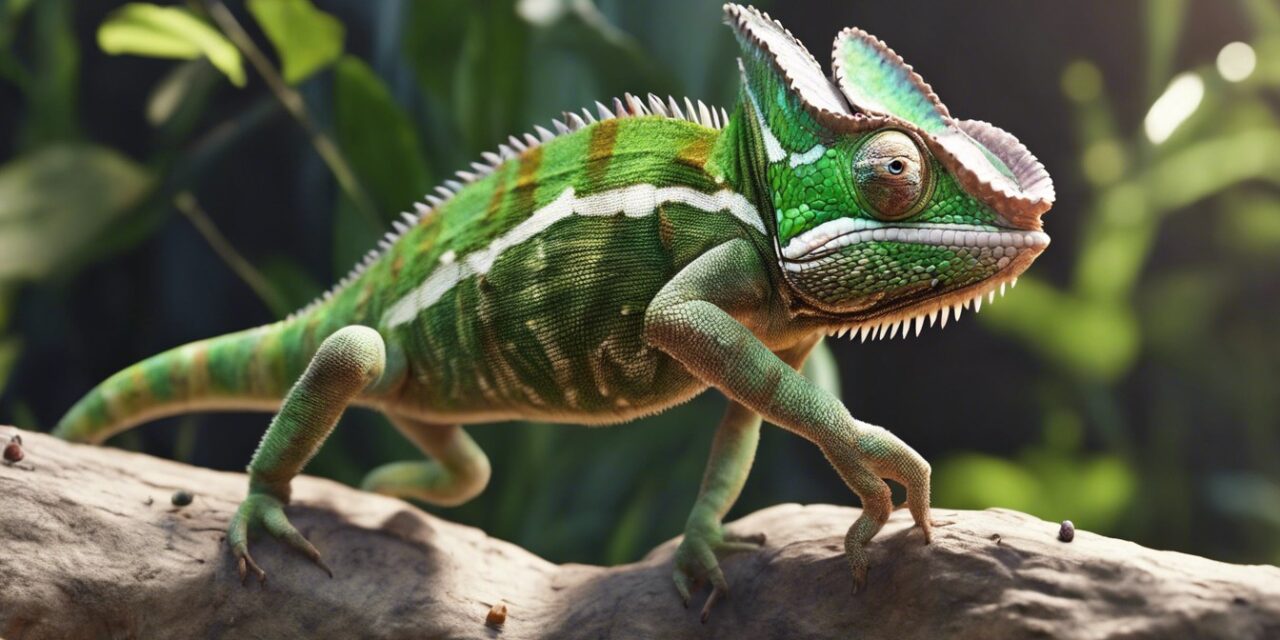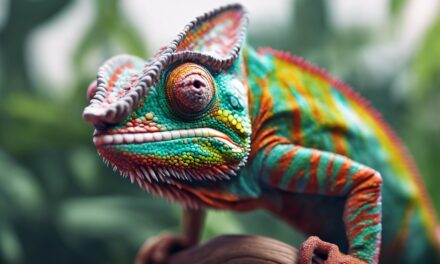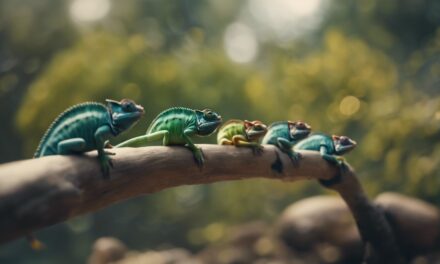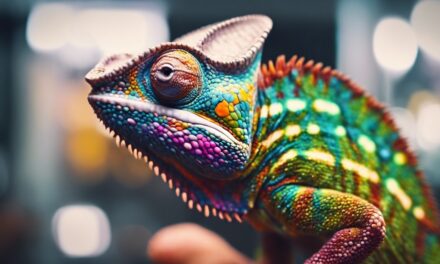The Colorful World of Chameleons
Chameleons are fascinating creatures known for their ability to change color. Their vibrant hues and intricate patterns make them a captivating sight in the animal kingdom. But have you ever wondered what chameleons eat? Join us as we embark on a journey to explore the diverse diet of these remarkable reptiles.
Understanding the dietary habits of chameleons is essential to ensure their overall health and well-being. These unique creatures have specific food preferences that contribute to their nutrition and survival. By examining their eating habits, we can gain insights into their natural behavior and better care for them as pets.
Chameleons are not picky eaters; they have a wide range of food choices. Insects form a staple part of a chameleon’s diet, providing them with essential nutrients and sustenance. From crickets and grasshoppers to mealworms and flies, these small arthropods offer a rich source of protein and other vital nutrients.
However, it’s important to note that different species of chameleons may exhibit variations in their food preferences. Some species may consume small vertebrates in addition to insects, which is an unconventional choice for reptiles. This includes small birds, lizards, and even other chameleons.
Understanding the intricacies of a chameleon’s diet helps us appreciate their unique adaptations and ecological role. By providing them with appropriate nutrition, we can support their growth, reproduction, and overall well-being.
Exploring the Varied Diet of Chameleons
Chameleons have a diverse diet that consists of both insects and, surprisingly, small vertebrates. Let’s take a closer look at these two categories and understand their significance in a chameleon’s diet.
Insects: A Staple in a Chameleon’s Diet
Insects play a crucial role in the diet of chameleons. These fascinating reptiles primarily feed on a variety of insects, which provide them with essential nutrients and energy. From crickets and grasshoppers to beetles and moths, chameleons have developed specialized hunting techniques to capture their prey.
The consumption of insects is not only a matter of preference for chameleons but also an important part of their survival. Insects are rich in protein, vitamins, minerals, and other vital nutrients that contribute to the overall health and growth of these reptiles. Their ability to snatch up bugs with their long tongues or ambush them using their remarkable camouflage skills showcases their unique adaptations as predators.
Vertebrates: An Unconventional Choice for Chameleons
Contrary to popular belief, some chameleon species also consume small vertebrates as part of their diet. While this behavior may seem unconventional for reptiles known for eating insects, it highlights the adaptability and opportunistic nature of chameleons.
Chameleons have been observed preying on small birds and lizards when given the opportunity. This behavior is more commonly observed in larger species or those inhabiting environments where insect availability may be limited. However, it’s important to note that not all chameleon species exhibit this dietary preference.
The inclusion of small vertebrates in a chameleon’s diet provides additional sources of protein and nutrients that may not be readily available from insects alone. This flexibility allows chameleons to adapt to different ecological conditions and maximize their chances of survival.
Understanding the varied diet preferences of chameleons sheds light on their incredible versatility as hunters and consumers. Whether they’re feasting on bugs or occasionally indulging in small vertebrates, these reptiles showcase remarkable adaptations that enable them to thrive in diverse environments.
The Significance of a Balanced Diet for Chameleons
A balanced diet is crucial for the overall health and well-being of chameleons. Just like any other living creature, these reptiles require a nutritious and well-rounded diet to thrive. Let’s delve into why a balanced diet is so important for chameleons.
Understanding the Importance of a Balanced Diet
A balanced diet ensures that chameleons receive all the necessary nutrients for growth, development, and survival. It provides them with the essential vitamins, minerals, proteins, carbohydrates, and fats they need to maintain optimal health.
Proper nutrition plays a vital role in various aspects of a chameleon’s life. It supports their immune system, helping them fight off diseases and infections. A well-balanced diet also promotes healthy bone development and muscle growth, enabling these reptiles to move efficiently and exhibit their natural behaviors.
Without a balanced diet, chameleons may suffer from nutritional deficiencies or imbalances that can lead to serious health issues. For example, inadequate calcium intake can result in metabolic bone disease, causing weakened bones and deformities. Insufficient hydration or lack of proper hydration sources can lead to dehydration and organ failure.
To ensure their dietary needs are met, it’s important to offer chameleons a variety of food options that mimic their natural feeding habits. This includes providing live insects such as crickets, mealworms, roaches, and silkworms as primary sources of protein. Additionally, gut-loading or dusting these insects with vitamin and mineral supplements helps enhance their nutritional value.
Incorporating leafy greens like kale, collard greens, dandelion greens, and edible flowers into their diet provides essential vitamins and fiber. These plant-based foods contribute to the overall balance of nutrients required by chameleons.
By offering a diverse range of foods that reflect their natural dietary preferences in captivity or ensuring access to suitable prey items in the wild, we can help chameleons maintain good health throughout their lives.
Unveiling the Dietary Needs of Chameleons
Chameleons have a diverse diet, ranging from insects to small vertebrates. Their food preferences and dietary habits are fascinating to explore. However, one thing remains constant: a balanced diet is essential for their overall health and well-being.
Understanding the dietary needs of chameleons is crucial for reptile enthusiasts, pet owners, and nature lovers alike. By providing them with a nutritious and well-rounded diet, we can ensure their optimal growth, development, and longevity.
A chameleon’s diet should consist of a variety of live insects that mimic their natural prey items in the wild. These include crickets, mealworms, roaches, and silkworms. Additionally, incorporating leafy greens and edible flowers into their meals provides essential vitamins and fiber.
Offering a balanced diet not only supports their physical health but also enhances their vibrant colors and overall appearance. Proper nutrition contributes to the strength of their bones, muscles, and immune system.
As responsible caretakers or admirers of these incredible creatures, it is our duty to provide them with the best possible care. This includes understanding their dietary needs and ensuring they receive a nutritious diet that meets all their nutritional requirements.
By unveiling the dietary needs of chameleons, we can appreciate the complexity of their feeding habits while also promoting their well-being in captivity or in their natural habitats.










Recent Comments